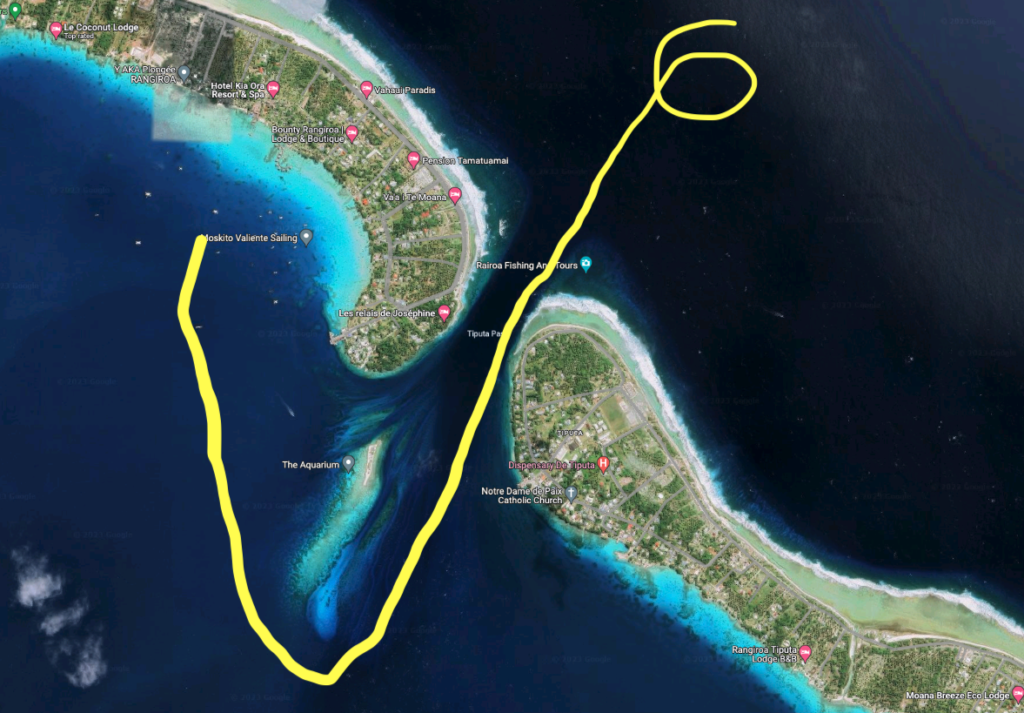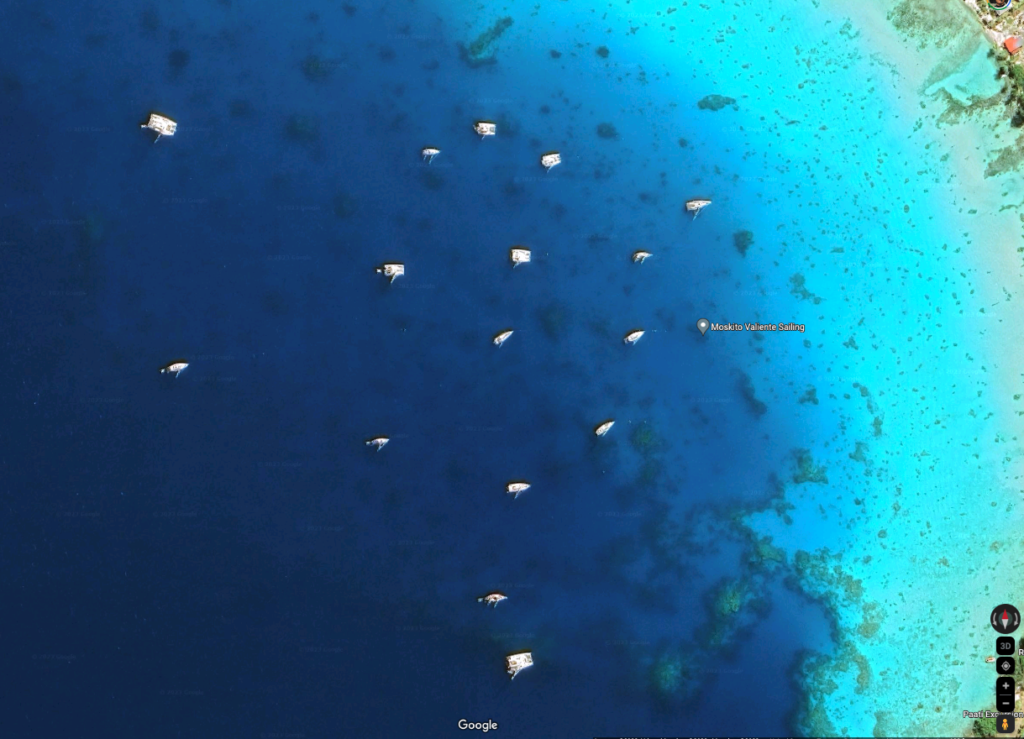Note: These events happened in July 2022 but I am writing this post in Dec 2023.
July 11 we left Anse Amyot cove in Toau, heading to Rangiroa. It’s just over 100nm and the tide tables said about 8am would be a good time to enter the pass on Rangiroa so we did an overnight sail. Conditions were great with an easy sail and enough wind until dawn when we arrived outside the pass for a nice sunrise.

Arriving at dawn, it was too early to enter the pass. At that time there would have been 3 to 5 knots of current flowing out, possibly producing standing waves 1 to 2 meters tall. It is a narrow pass in which conditions can change rapidly and get dangerous. So we spent a couple hours doing circles outside the pass waiting for slack tide.


As we approached the pass, supposedly at slack tide, we could see that there was still a strong out-flow. We have found that even when the tide tables say the tide should be slack (ie changing from in-to-out or out-to-in), there is often still quite a bit of out-going current. I suspect this is because, especially at high tide, waves hitting low-lying areas all around the lagoon wash water into the lagoon and the water has to go out somewhere.
While there were nasty standing waves in down the middle, we could see areas, just a bit to port, where it was much calmer. According to the charts, there was plenty of depth in the calm area and visibility was good so we decided to go for it.

I was on the bow watching for obstructions and was Peggy at the helm. As we motored in the current against us reached about 3 knots so Peggy went full-throttle and pushed us through. There were a few tense moments with scary standing waves just a few meters to stbd but Peggy did a masterful job and soon we were through the worst of it.

As you can see from the sat view, just inside the pass is a long reef that we had to go around before turning to stbd and going into a nice anchorage. As always in these lagoons, it is critical to have someone on the bow looking for coral heads that might be 2 to 8 ft wide and only a few feet below the surface in areas where it is generally 10 to 50 ft deep.

This is a sat view of the anchorage from google maps. You can see dangerous coral and shallow areas along the right, especially the lower right. You can also see ‘coral heads’ or baumies, the dark spots in deeper water. These can be especially dangerous. Not so long ago sailors did not have access to any images like this. Now, we have satelite images at multiple resolutions and from multiple sources (Google, Bing, ArcGIS) that we have downloaded to our local disk in a format that works with a free navigation program called OpenCPN. This allows us to view these images along side our nautical charts (maps), all with our boat’s GPS location placed correctly on the chart or image. It’s really nice. But, you can’t get complacent because things change and the charts or your location might be wrong so you ALWAYS have someone watching to make sure.
We got anchored safely, had breakfast and then a nap after a very nice overnight passage.
Rangiroa has a nice little town with a few restaurants and at least one ‘high end’ hotel, the Kira Ora Resort that has nice bungalows over the water.

The next morning we went into town and found parts of it flooded due to an unusually high tide.

The boat in the upper right is tied at the dock which is now several inches under water. Normally, it is a foot or more above the water at high tide.
We walked around the town for a while and then rented e-bikes and went for a spin up the motu. After that, provisioning at a small grocery store with an OK supply of veggies (ie a few tomatos, a head of lettuce (lucky!), some potatoes and onions) and then back to Calista.
If you look at the photo showing our path coming in through the pass, in the center you will see ‘The Aquarium’. This is an area of the reef with a number of buoys that have displays talking about the different corals and animals you can see in this area. It was a nice place to snorkel, even though the visibility was only so-so and some places had currents faster than I wanted to swim against even with my fins.





